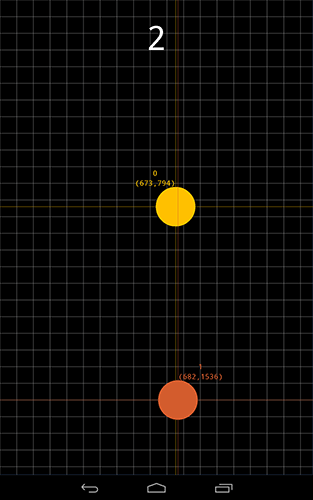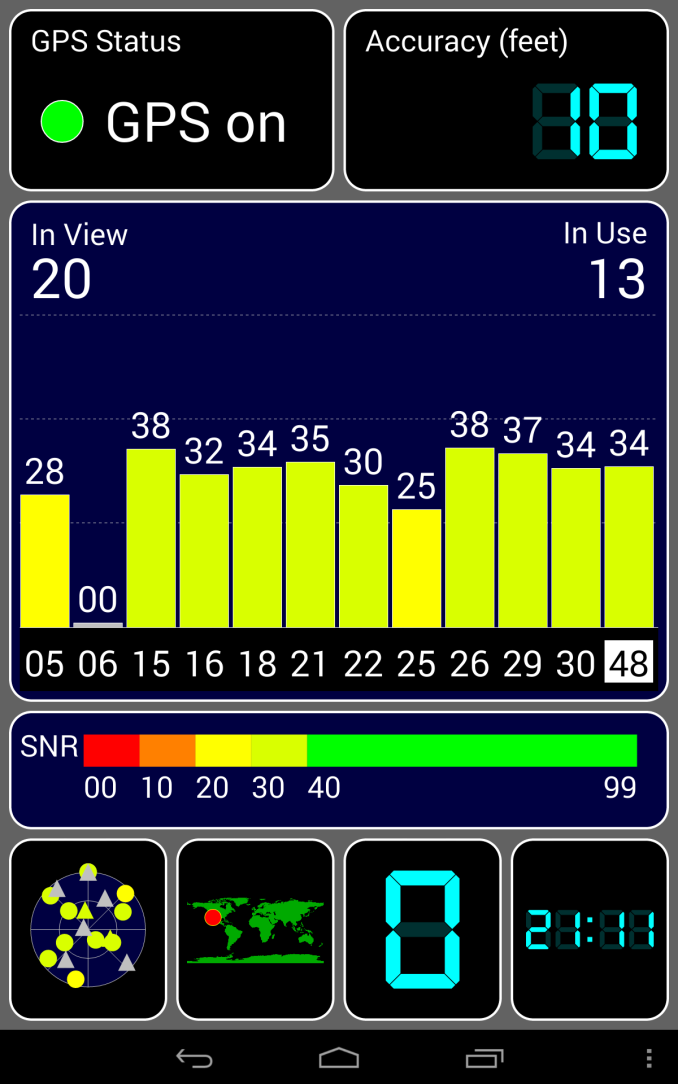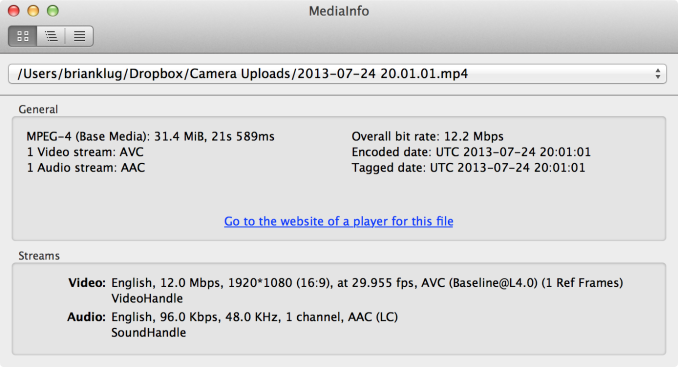The Nexus 7 (2013) Review
by Anand Lal Shimpi on August 22, 2013 6:00 PM ESTWiFi, GPS
I won't spend too much time on either of these points as Brian already did so in his initial review. WiFi duties are handled by Qualcomm's WCN3660 WiFi combo chip. The new Nexus 7 sees an update to include 5GHz 802.11n support, which is a very welcome addition. There's no 802.11ac, understandably for cost reasons. 802.11ac is probably the only thing missing from this otherwise awesome platform.

When it comes to GPS, there's good news and bad news. The good news is that Qualcomm's GNSS implementation remains the fastest we've tested as far as time to lock is concerned. The bad news is there seems to be an issue with the Nexus 7's impementation, likely in software, that results in the tablet randomly losing GPS lock. Update: It looks like this has been fixed!

Note that neither my Nexus 7 nor Brian's have exhibited the instability or consistent reboots that I've seen reports of. I had a single unexpected reboot during my GPS testing but that was it. Brian's sample has been running with over 22 days of constant uptime at this point. I also haven't seen any multitouch issues on my Nexus 7, although touch controllers are sometimes sourced from multiple vendors which could explain some of the issues others are seeing. Update: Looks like this one is fixed too!
Camera
The new Nexus 7 adds a 5MP rear facing camera, something its predecessor didn't have at all. While I rarely use my tablet for taking photos, I will admit the absence of a rear facing camera on the old Nexus 7 caught me off guard. Image quality out of the rear camera is decent. I threw together a gallery comparing the Nexus 7's rear camera to the iPad mini, MeMO Pad HD7 and Galaxy Tab 3 8.0:
In well lit situations and if you're sharing photos at lower resolutions, the Nexus 7's camera isn't bad at all. It's not the best thing in the world but in a pinch it's fine. I also threw in iPhone 5 samples as a reference in the gallery above.
Video on the Nexus 7 (2013) is 1080p30 at 12 Mbps, H.264 Baseline with 1 reference frame, and 96 kbps 48 KHz single channel AAC audio.


















202 Comments
View All Comments
solipsism - Friday, August 23, 2013 - link
1) I use 802.11ac but I haven't turned off g or n, just as I didn't turn off g or b when I used n. By your measure we're still decades away from using 802.11g.2) WAN speeds have nothing to do with LAN speeds. If you understood how WiFi works you'd not male a simple 1:1 comparison.
3) Now you're moving it to a discussion about cellular? These are not mutually exclusive technologies.
joos2000 - Friday, August 23, 2013 - link
In regards to point 2:Most wifi routers are typically hooked to the Internet through xDSL or cable. Typically, when you're surfing or streaming content, it is the dsl/cable connection that is the limiting factor in terms of speed, regardless of what type of wifi you are using. I think that was fairly obvious from the previous guy's post.
However, if you are streaming data from your private server on your gigabit LAN, well, then you may well notice some difference in speed, however, my n-based home wifi can easily stream 1080p content without stuttering, so the new ac standard doesn't feel quite as necessary an upgrade compared from the g->n upgrade I did a while back.
Cheers, /J
solipsism - Friday, August 23, 2013 - link
You either deliberately ignored what I stated or didn't understand it. Your theoretical maximum performance per your LAN or WAN is irrelevant when it comes to the full picture of performance. If you bought an 802.11n router that doesn't mean you get 450 or 600Mbps from that router. Let's say it says 450Mbps on the box and your PC also supports those max data rates, does that mean you're getting 450Mbps right now? Of course not! That's an optimal theoretical level. The farther away you are and/or the more interference affecting Tx or Rx the worse the throughput will be. But for this let's say you are right next to it, and your homes is a Faraday cage. What can you determine in terms of total LAN performance? Nothing should be your answer at this point because you have no data on how many other devices are also using that same WiFi network. For the lack of a better term WiFi works much like the old token ring networks which mean that when the router is Tx or Rx from another device it's not listening to you. This happens quickly but each active device slows down your maximum throughput. This is why, even for a LAN having additional spatial streams, antennas, and higher throughput can affect overall network performance to and from the internet.joos2000 - Friday, August 23, 2013 - link
I'm not saying that you are wrong. I'm just saying that the current tech works well for me (and presumably a lot of people) and that there is no subjective need to fill.If the new standard has improved your experience, since you seem to have a lot of devices on your Wifi, then obviously this generation serves a purpose for you straight away. However, it doesn't for me, for all the reasons you mentioned. And I think that's all the original poster wanted to say really and I agree with him.
whyso - Friday, August 23, 2013 - link
I think what he means and what you aren't getting is that the supplied internet to your house has trouble saturating a 802.11n connection let alone an ac connection. For me with my 5 mbps internet 802.11ac does squat.solipsism - Saturday, August 24, 2013 - link
@ whyso,Of course it doesn't, but that doesn't mean WiFi can help utilize your LAN connection. I have about a few dozen devices on my network with about 10 people connected between wired LAN, main WiFi, and guest WiFi on a single access router so having faster WiFi is quite beneficial to optimizing the WAN connection.
darwinosx - Thursday, August 22, 2013 - link
Completely wrong.jl0329 - Wednesday, October 9, 2013 - link
Dumb shit.ShieTar - Friday, August 23, 2013 - link
"Lack of cellular connectivity on the other hand results in lack of internet access in most locations, and is a major omission."How many people do actually own a second SIM for their tablet instead of just using their phone as a hotspot?
CSMR - Friday, August 23, 2013 - link
People may do this but it should be obvious how terrible this solution is. It requires user intervention, requires the user to carry around a second device and a cable, and it does not give always-on internet but just occasional internet. If this were a good solution you would not need wifi on the tablet either, you could just attach your phone.